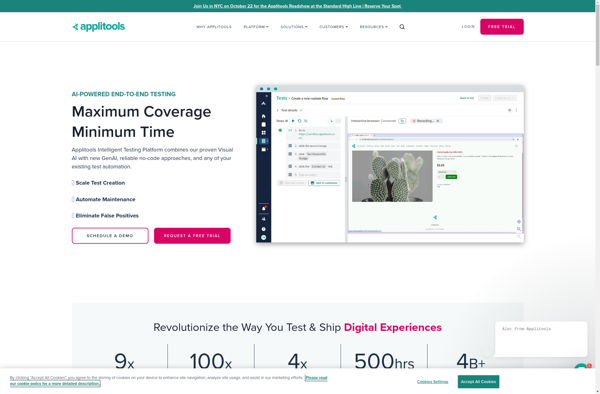Description: Sikuli is an open source graphical user interface (GUI) automation and testing tool. It can identify and control GUI components by matching images of them, enabling test automation without needing access to the application's source code.
Type: Open Source Test Automation Framework
Founded: 2011
Primary Use: Mobile app testing automation
Supported Platforms: iOS, Android, Windows
Description: Applitools Eyes is an automated visual testing and monitoring software for web and mobile apps. It uses AI and machine learning to detect visual bugs and regressions in UI/UX. Ideal for CI/CD pipelines to ensure app quality.
Type: Cloud-based Test Automation Platform
Founded: 2015
Primary Use: Web, mobile, and API testing
Supported Platforms: Web, iOS, Android, API

